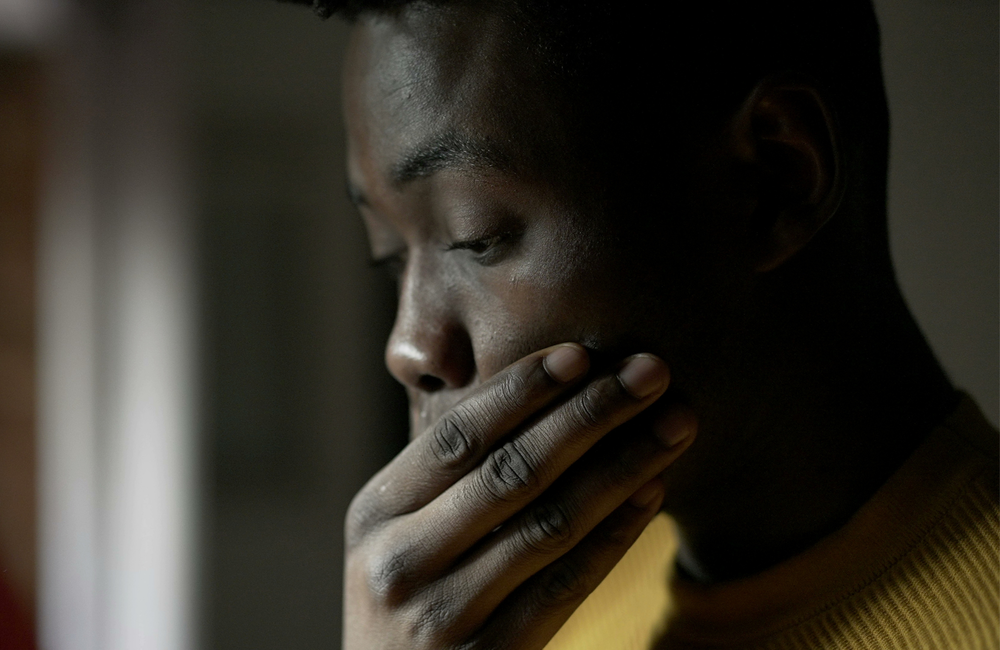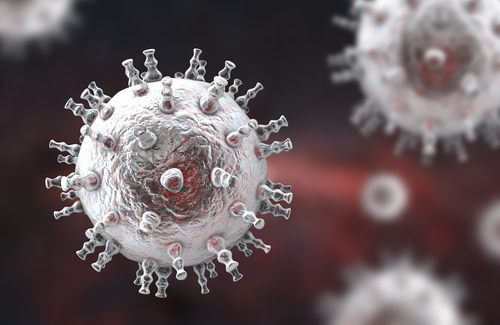
A qualitative study sought to understand the barriers and facilitators to diagnosis of HIV-associated Kaposi’s sarcoma in Kenya. The results, published in AIDS, revealed that both health providers and people with Kaposi’s sarcoma lacked awareness of the disease, so it was frequently diagnosed at an advanced stage. Seeking traditional treatments, lack of biopsy availability and delays in getting referrals to other hospitals were also major barriers, while being part of an HIV care network was a facilitator for early diagnosis.
“Our study highlights that there are multiple delays along the care cascade in people with KS in reaching a diagnosis. Notably, a general lack of KS awareness and education among patients and providers, stigma surrounding both HIV and cancer diagnoses, and health system referral delays were important barriers in receiving a diagnosis of KS”, say Dr Devon McMahon and colleagues.
Kaposi’s sarcoma (KS) is caused by the human herpes virus 8 and is more likely with a weakened immune system. Despite the widespread use of effective antiretroviral therapy and the resulting restoration of CD4 cells, it remains one of the most common cancers in people living with HIV. In sub-Saharan Africa, four in five cases of KS are attributable to HIV, and about 69%-89% of people with the disease are diagnosed at an advanced stage.
In HIV-associated KS, where there is a dual diagnoses of HIV and cancer combined with a visible skin disease, factors for diagnostic delays have not been analysed. The investigators therefore conducted 30 semi-structured interviews between February to August 2019 with participants newly diagnosed with HIV-associated KS to understand the barriers and facilitators of their diagnosis.
The study took place at the Moi Teaching and Referral hospital, and three other HIV primary care clinics in western Kenya. Most of the participants were male (83%), with a median age of 34. Almost all (87%) had been diagnosed with advanced-stage KS.
Individual-level barriers
Participants initially interpreted their lesions as harmless or normal skin changes. They attributed them to insect bites, allergic reactions, ageing, or side effects of HIV treatment. As most participants had never heard of KS, they had a low suspicion of the disease.
“At first it started on the head, it was swollen here on the left so I thought maybe I had been bitten by a mosquito. I sensed something of the sort but after a while, it grew.”
“Now this skin problem started when I began taking medication for HIV. It started with small lesions on the nose and the head, but it worsens when I shave my head.”
An important facilitator during this appraisal delay was if the patient had previously met someone with KS or saw public health campaigns related to cancer or KS, allowing them to recognise similar lesions on their body.
But even after realising they were ill, participants still delayed seeking treatment as they did not view skin disease as a serious health condition. For those whose disease became severe, they avoided seeking care due to fear of stigma, invasive procedures and learning their HIV status.
“Investigator: Were you scared before you went to the hospital that this skin problem could be related to HIV? Respondent: Yes, I was afraid.
I: Did that keep you from going to a hospital? R: Yes, it took some time.”
An important facilitator during this period was having a member of the participant’s social network recognises the lesion as potentially dangerous, while providing encouragement or practical help for them to visit a health centre.
However, over half of the participants in the study were advised by their social network to visit traditional healers, as many believed the KS lesions resulted from being bewitched. For a few who sought care from local pharmacies, the prescribed pain medications masked the illness, delaying the eventual diagnosis of KS. Some participants were particularly worried about visiting a hospital after stopping or delaying ART, as the majority of those interviewed were aware of their HIV status, but had stopped taking ART.
“They apply herbal medicine and some to take orally and for bathing, but they didn’t work, days were moving and the rashes were worsening, you are spending a lot of money and the disease is not improving.”
“…when the dermatologist gave me the drugs, the problem reduces, so I thought that the problem was solved, like the black patches went away, the itching reduced so I thought the problem was over.”
Participants eventually sought hospital care once their skin changed and the swellings became disabling or painful. A facilitator to presenting at a clinic was family dependency. The inability to provide for their families due to illness caused many participants to seek diagnosis and find treatment. A few were also motivated by having health insurance and knowing that health costs would be covered.
Health-system barriers
At the clinics, participants took a long time before receiving a clinical diagnosis, that is, identification of the likely disease based on symptoms and signs.
“There is a time I was brought here to queue for a long time, I really suffered, and I would get out of the wheelchair and lie on the floor.”
Some people were not physically examined or were given the wrong diagnosis.
“I told them I was seeing swelling and was very itchy day and night, so they told me that I should insert the legs in cold water.”
Delays in clinical diagnosis prompted participants to return to or start contact with traditional healers:
“If at the hospital they tell you that they don’t know what the problem is, then what comes to your mind? I am bewitched.”
A facilitator for some participants in receiving a clinical diagnosis was being part of an HIV care network which allowed them to easily access the healthcare system. A few participants reported being diagnosed with KS during their scheduled HIV clinic appointments.
After clinical diagnosis, participants faced delays before being referred to a specialist for biopsy. Some of the patients needed to have tissue diagnosis of KS from a pathologist but were not instructed where to travel for the biopsy.
“They mentioned that it could be skin cancer …they said that they didn’t have that testing machine so maybe I should go to a larger referral hospital.”
A few participants were initially diagnosed with early-stage KS and given HIV treatment alone. Although this therapy works for some participants, a few of those interviewed had disease progression despite taking anti-HIV drugs.
“He [doctor] only asked me to take medicine [ARVs] and that the lesion would clear.”
Facilitators during this time included a diagnosis of KS at the tertiary hospital or associated satellite clinic, which allowed for a more seamless referral for biopsy services.
While waiting to have the skin biopsy, participants struggled with the cancer diagnosis and feared having to go to a referral facility.
“I stayed in the house crying, saying ‘Why am I getting this condition, yet I have children who want to eat, is there anything that I did?’ I just kept asking myself ‘Should I commit suicide or what.?”
Stigma was also a major barrier within participants’ social networks and communities:
“Whenever I called a motorcycle to pick me up from my home they avoided me, because they had to carry me from my bed and put me on the motorcycle.”
Participants worried about the potential costs of diagnosing and treating cancer, as well as other costs related to going to the tertiary hospital. For others, it was a long wait before the biopsy.
“... they were dealing with biopsy cases on a Wednesday, and I was there on a Thursday. So, I waited until the next Wednesday, and then they told me they do not have the biopsy needles, so they referred me to [Larger Referral Hospital]. But when I came to [Larger Referral Hospital] just seeing a doctor was a problem…. I finally saw a doctor after spending three days waiting.”
A few participants also experienced delays between having a biopsy and being told of the results from their tissue examination. For some, this pathologic diagnosis took over one month.
“They told us they would call us after 2 months when the [biopsy] results will be out.”
Conclusion
From the multiple delays faced by people with KS before reaching a diagnosis, the authors call for improved public health campaigns about cancer screening and diagnosis, training on common HIV-related cancers for providers taking care of people with HIV, and decentralised biopsy services being available to primary HIV care facilities.
“Understanding both the underlying cause of late-stage KS diagnoses and the interventions most appropriately geared to the populations studied is imperative to minimising the delay of KS diagnosis and optimising early treatment options”, they conclude.
McMahon D et al. Understanding Diagnostic Delays for Kaposi Sarcoma in Kenya: A Qualitative Study. AIDS, published ahead of print, 2 May 2022.
DOI: 10.1097/QAI.0000000000003011

